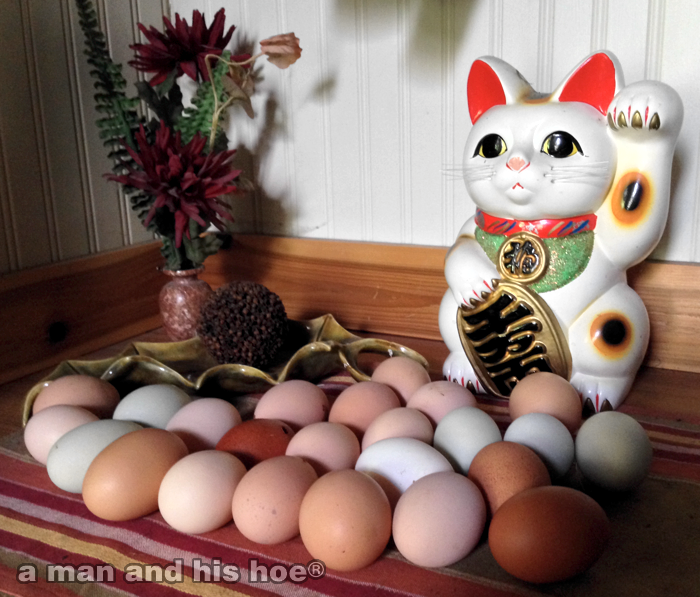On the board today – a simple lunch starting with freshly picked spring chrysanthemums (春菊-shyungiku) and kale, sautéed in home made butter made from raw cream.

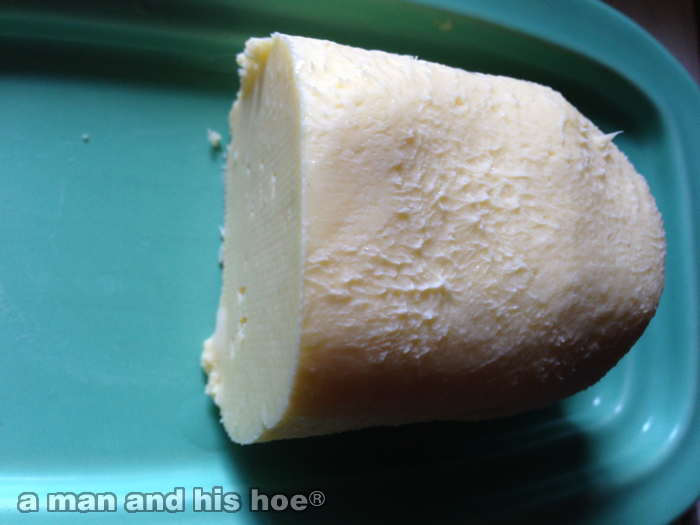
Followed by two eggs gathered within the past half hour, cracked into a bowl, laid on the sautéing greens, covered and allowed to gently firm to a soft egg.


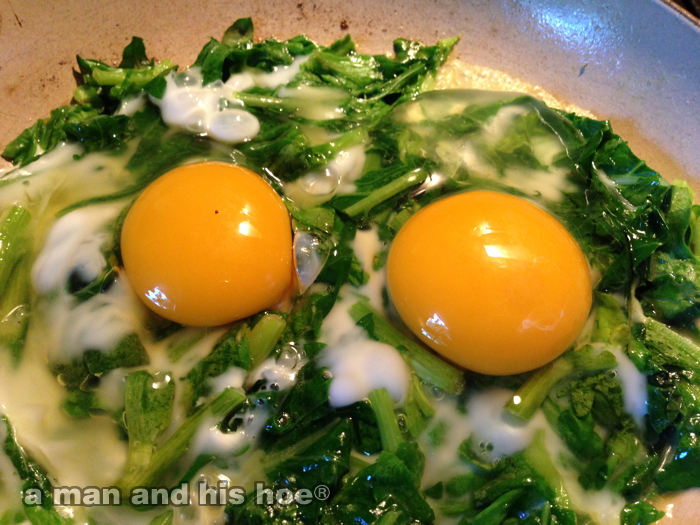
Flavored with a bit of sea salt from San Juan Island Sea Salt, and served on a bed of brown rice.
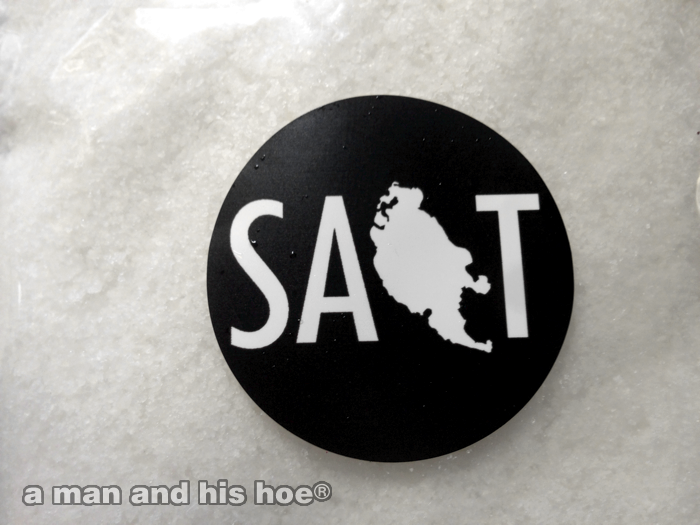

-
On the Board Today – May 18, 2014
-
NYT – What Farm to Table Got Wrong
Worth reading is What Farm to Table Got Wrong by Dan Barber of the New York Times. Despite the movement for local food and supporting local farmers, he notes the following:
In the last five years, we’ve lost nearly 100,000 farms (mostly midsize ones). Today, 1.1 percent of farms in the United States account for nearly 45 percent of farm revenues. Despite being farm-to-table’s favorite targets, corn and soy account for more than 50 percent of our harvested acres for the first time ever. Between 2006 and 2011, over a million acres of native prairie were plowed up in the so-called Western Corn Belt to make way for these two crops, the most rapid loss of grasslands since we started using tractors to bust sod on the Great Plains in the 1920s.
In the article he visits a grain farmer growing organic emmer wheat and describes the lengthy process the farmer takes growing his wheat. Before his fields are ready to grow a crop of wheat, he rotates a series of crops through the field. He begins with a cover crop of like mustard. He follows that with a legume crop like soybeans or kidney beans. After that he grows oats or rye. Each one of these crops does its part enhancing the soil. Only after all these crops have been rotated through the field is the field ready to grow a crop of emmer wheat.
What is needed to support this intensive process is for people to buy each of these crops. As Dan Barber points out:
It’s one thing for chefs to advocate cooking with the whole farm; it’s another thing to make these uncelebrated crops staples in ordinary kitchens. Bridging that divide will require a new network of regional processors and distributors.
-
Eat Beautiful Things
The great thing about growing your own food is that you can plant beautiful things to eat. Chive flower buds and blossoms add a splash of color to salads.
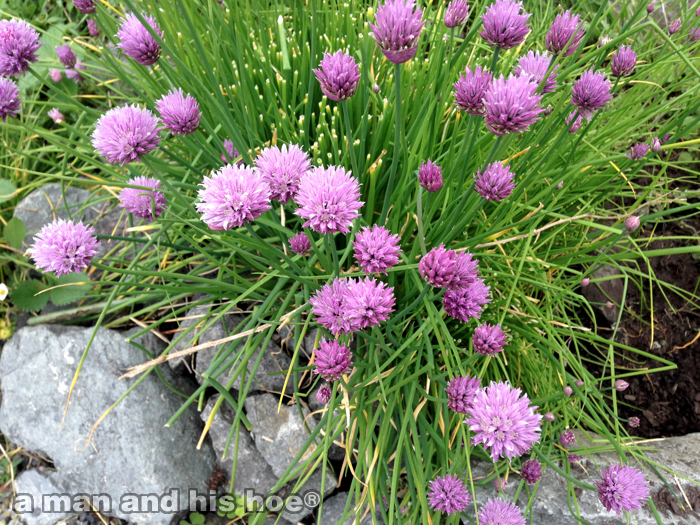
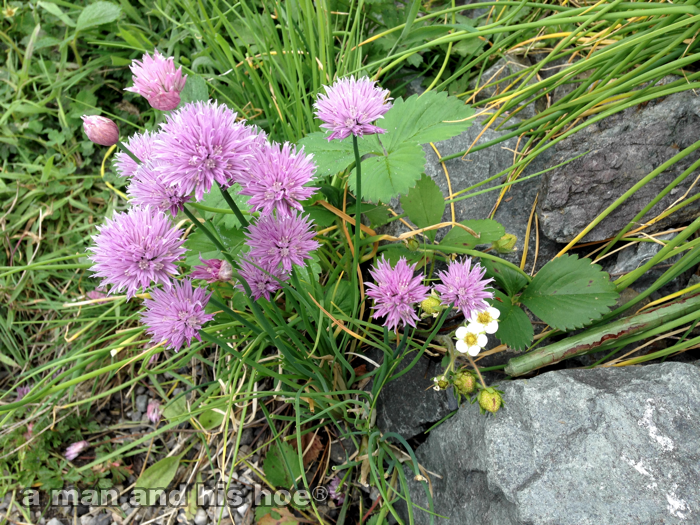
And don’t forget to plant plenty of flowers to decorate your table.

-
An Acre To Herself
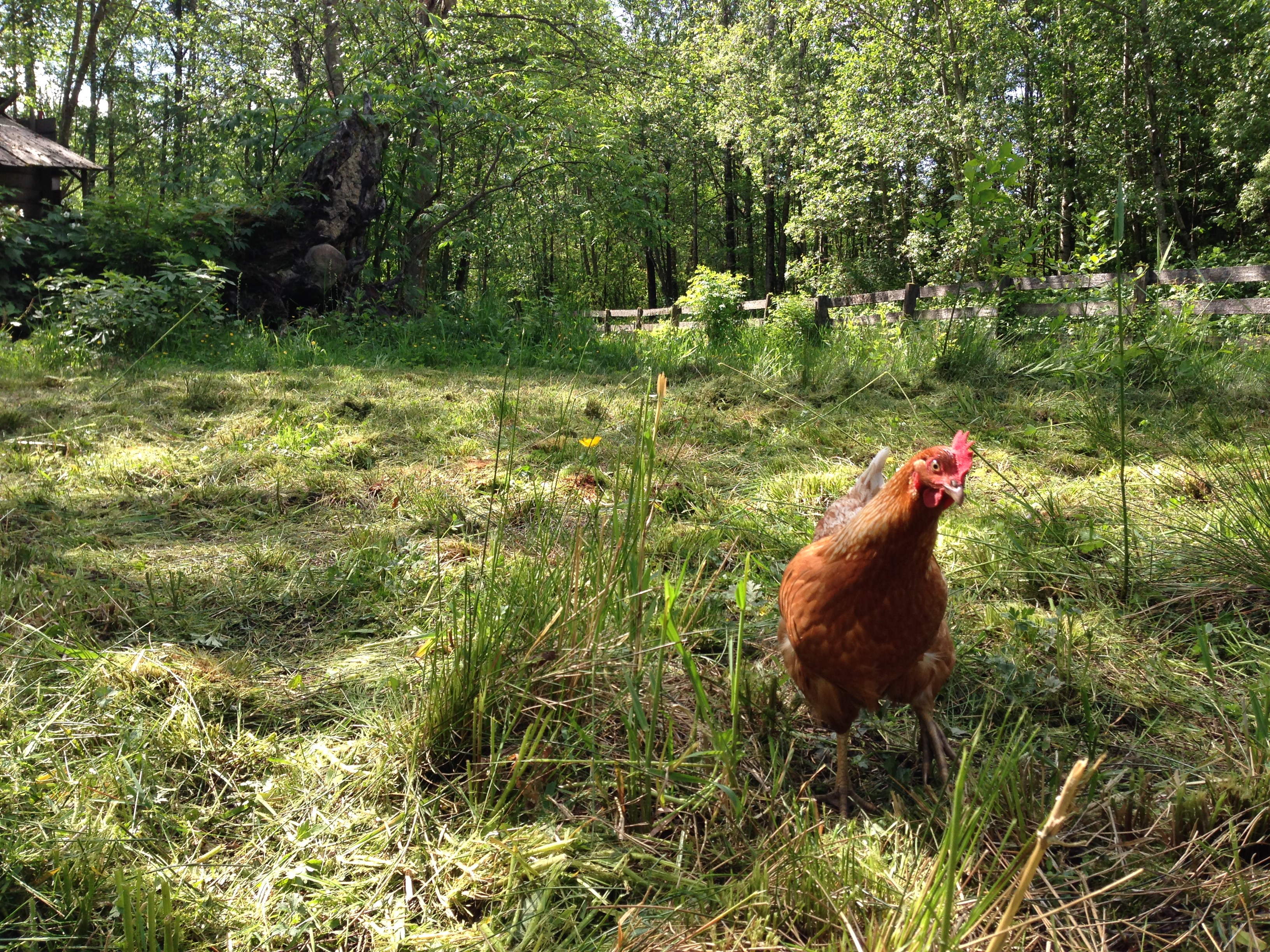
Chickens are social birds. They like to roost together. During the day they’ll hang out together in a dirt bath and gossip and kvetch. Hens will cavort with roosters and lead them on. But they also like to get away and be by themselves. They will meander off into the woods or deep into the pasture all on their own.I read an article in Modern Farmer by Tyler LeBlanc titled Virtual Reality for Chickens – Is this the future of free range? According to the article, Austin Stewart, a young assistant professor from Iowa State University, has designed a virtual world chickens can see by wearing a Oculus Rift headset. He’s even set up a website, Second Livestock, where he discusses his ideas of giving caged or confined animals the experience of being outdoors by wearing virtual reality headsets.
It makes me wonder if either Tyler LeBlanc or Austin Stewart have even seen a live chicken. The experience of being outdoors on pasture and in woodland, is much more than just seeing those things. It is about touching the tall grass, feeling the brush, scratching the dirt with their toes, pulling earthworms out of the ground, and hunting down a field mouse. And with headsets on, how in the world are these chickens going to preen themselves?
-
Iris, Wysteria, and Babies
It’s Iris and Wysteria season, a terrific time of the year to be outdoors.
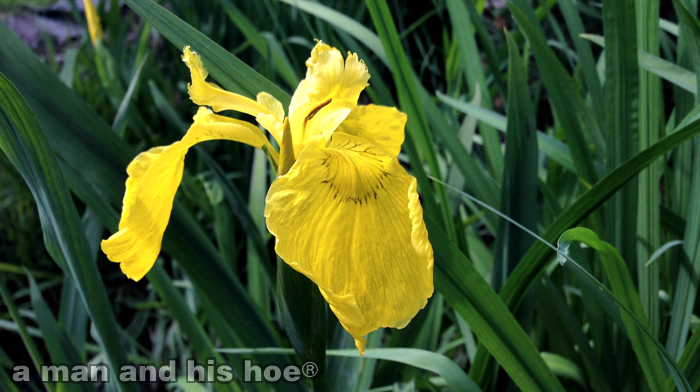
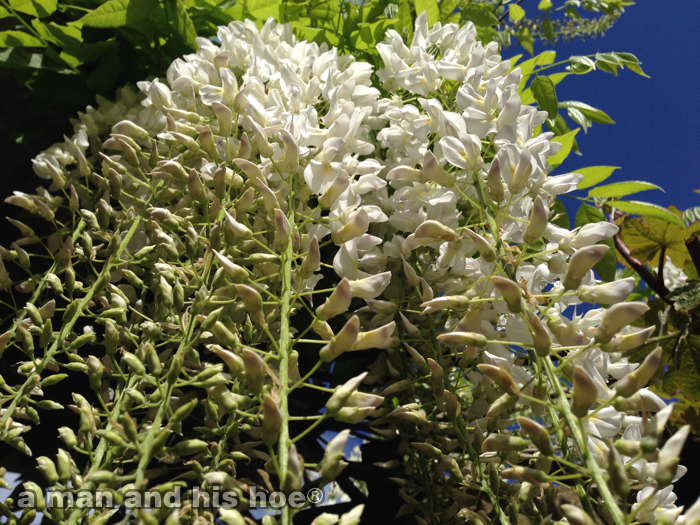
It’s an auspicious day to be born. These chicks are just hours old, safe and snug with their mother. The clutch is due tomorrow so these two are on the early side.
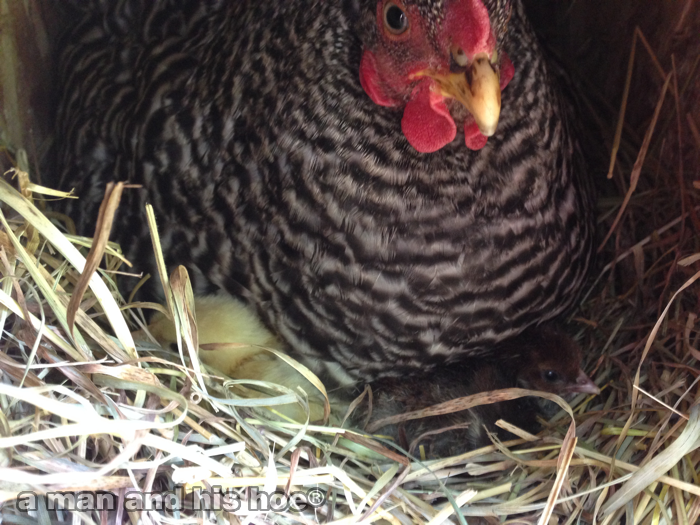

It’s a day for making a fuss. Hazel is making a fuss, but so many hens do after they’ve laid an egg. I guess if we had something as large as an egg coming out of our butt, we’d want to talk about it too.
[wpvideo fiWQ6iuT]
It’s a day for temporary art. The alcove in the entry way is a handy place to display eggs gathered this afternoon.
